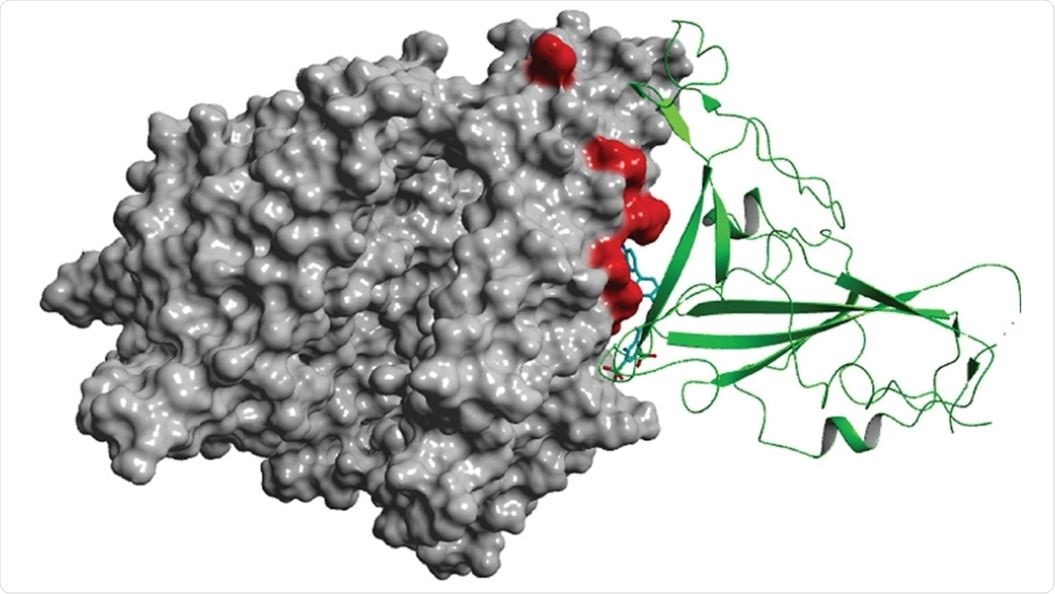The ongoing pandemic of COVID-19, caused by the severe acute respiratory syndrome coronavirus 2 (SARS-CoV-2), represents a health emergency that necessitates the continued use of vaccines, but also the development of new drugs to prevent or treat this disease.
However, the latter seems to be a much more complicated issue. Due to the time and cost constraints pertinent to the development of new medications, a drug repurposing process has been posited as a somewhat reasonable approach for now, which entails using drugs that have already been approved for other treatment purposes.
We already know that SARS-CoV-2 utilizes the angiotensin-converting enzyme 2 (ACE2) as a receptor to engage with host cells, and a high affinity for the aforementioned receptor was noted for the receptor-binding domain (RBD) of the viral spike glycoprotein. This is an event that can be targeted by potential inhibitors of infection.
Consequently, Professor Michael Jennings and Associate Professor Thomas Haselhorst at the Institute for Glycomics of Griffith University in Australia led a research team that used a combination of biophysical and computer-based methods in their quest for drugs that halt the binding of SARS-CoV-2 to host cells.

Evans blue (cyan) is shown bound at the interface between the SARS-CoV-2 Spike (green) and its host receptor ACE2 (grey). Image credit: A/Prof Thomas Haselhorst
Molecular modeling strategy
The methodological approach included computational and biophysical compound library screens in order to reveal potential entry inhibitors that can bind to the receptor for SARS-CoV-2, ACE2, and the SARS-CoV-2 spike glycoproteins. The researchers have also developed a biophysical assay to appraise the potential of identified compounds to block the SARS-CoV-2 spike protein RBD-ACE2.
More specifically, this study has employed a dual strategy of molecular docking and surface plasmon resonance (SPR) screening of compound libraries to pinpoint those that bind to human ACE2 or the SARS-CoV-2 spike glycoprotein RBD. A Vero-E6 cell-based assay was used to assess infection blockade by candidate entry inhibitors.
Consequently, molecular modeling screening examined 57,641 compounds and concentrated on the region of ACE2 that is engaged by RBD of the SARS-CoV-2 spike glycoprotein (and vice versa). Furthermore, SPR screening used immobilized human ACE2 and SARS-CoV-2 spike glycoprotein in order to evaluate their binding to a library of 3,141 compounds.
Registered drugs and dyes
In this study, the researchers report a series of ligands that bind with KD (i.e., equilibrium dissociation constant) in the low nanomolar to the low micromolar range to the human ACE2 protein. Molecular modeling used in this paper supports the hypothesis that these compounds are able to bind in the same region of ACE2 that SARS-CoV-2 uses as a cellular receptor.
Twelve binders of ACE2 and six binders of RBD were found to compete with the RBD-ACE2 interaction in an SPR-based competition assay. Among them, there were registered drugs and dyes used for various biomedical applications, and all 22 identified compounds provide scaffolds for the development of novel chemical entities in the treatment of COVID-19.
These scientists have also found that three of them – Evans blue (medical dye), lumacaftor (cystic fibrosis), and sodium lifitegrast (dry eye) – were found to halt viral infection of cells in the culture and, hence, may be further appraised for repurposing as treatment agents or even to steer the development of new drugs.
Blueprints for novel antiviral compounds
In summary, the specific compounds revealed in this study can be considered as viable candidates for additional evaluation of inhibiting SARS-CoV-2 viral entry in primary human airway cellular model systems and ACE2-humanized animal models.
“All identified drugs in this study have potential to provide blueprints for the development of new antiviral compounds for the treatment of COVID-19”, said Dr. Christopher J. Day, the first author on this paper.
“The promising outcome of this research is thanks to significant funding received from the Queensland Government and the City of Gold Coast. Each provided $100,000 to the Australian node of iCAIR®’s COVID-19 project to develop treatments against SARS-CoV-2”, said the co-author of the study Professor Mark von Itzstein.
In conclusion, the compounds identified here comprise high-affinity ligands of ACE2 and spike glycoprotein that are actually registered drugs, as well as a specific dye used for biomedical applications. All of them may be considered as candidates for repurposing or as chemical scaffolds in order to produce entry blockers to either prevent or cure COVID-19.
Source:
Journal reference:
- Day, C.J. et al. (2021). Multidisciplinary Approaches Identify Compounds that Bind to Human ACE2 or SARS-CoV-2 Spike Protein as Candidates to Block SARS-CoV-2–ACE2 Receptor Interactions. mBio. https://doi.org/10.1128/mBio.03681-20